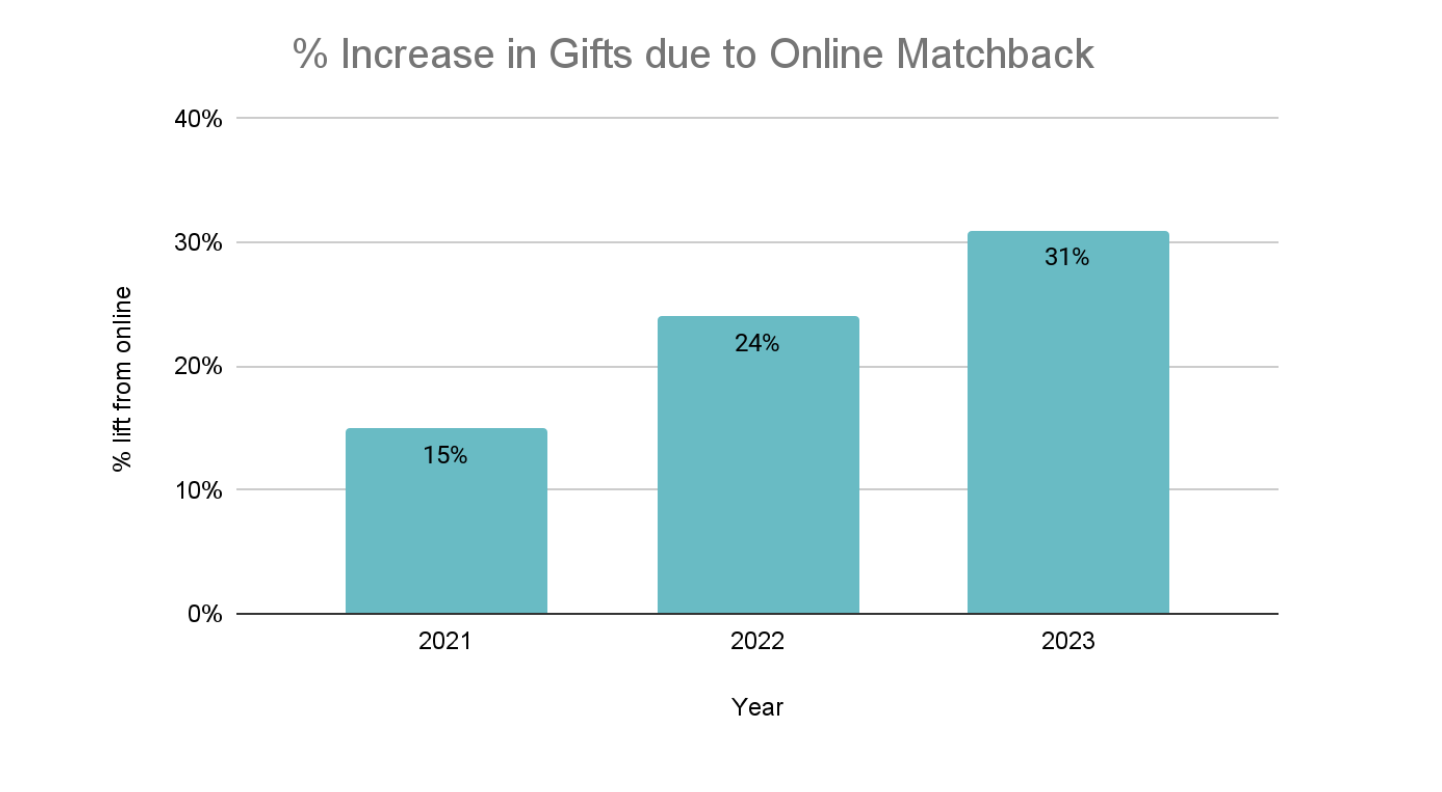The Evolution of Fundraising: How Donors Are Responding to Direct Mail
In the ever-evolving landscape of fundraising, one trend prominently stands out: the changing way people respond to traditional mail appeals. In recent years, we have noticed an increasing preference among mail recipients to make their contributions online. Through matchback analysis, we have been able to understand this shift better and decode donor behavior to optimize fundraising strategies.
Matchback Analysis
A matchback analysis is used to correlate and analyze donor responses across different channels, typically between direct mail and online giving. It involves identifying donors who have received a direct mail appeal and subsequently donated through other channels. (In this analysis, we looked at online gifts.) Specifically, we took into account online gifts given by a donor initially targeted with a direct mail piece and used a 90-day attribution window. The matchback looked at the last names and addresses as identifiers between the mail file and the online gift.
Our data from recent years shows a consistent increase in the percentage of online gifts made by those mailed in acquisition. This trend has been consistent across the majority of clients who engaged in acquisition campaigns with Masterworks in this timeframe.
Implications for Fundraising Strategy
This shift underscores a fundamental change in donor preferences and highlights the need for ministries to adapt their direct response strategies accordingly. With more donors transitioning from giving through the mail to giving online, we can tailor future direct response appeals to maximize donor engagement and contributions by making online giving more accessible. By incorporating features like QR codes and shortened URLs in mail pieces, we can simplify the donation process for donors, thereby encouraging more contributions.
Additionally, Masterworks co-targets our direct mail prospect audiences online with digital media. This helps build surround, multichannel awareness and improve the overall performance of our direct response efforts.
All of this underscores the importance of adaptability and innovation in fundraising strategies. By recognizing and embracing this change, ministries can not only effectively engage with donors but also cultivate a sustainable path toward achieving their philanthropic goals in the digital age.
Interested in learning more about this analysis or more like it? We'd love to talk. Reach out here.
About Susannah Layanto
Susannah Layanto is a Business Analyst on the Strategy, Insights & Planning team at Masterworks with experience in data analytics and its business applications across a range of industries. She recently graduated from Georgia Tech with her B.S. in Industrial Engineering, focusing on Analytics & Data Science, and is currently pursuing her Master's in Analytics part-time. Susannah's favorite part of Masterworks is working alongside passionate people to uncover insights and provide strategic recommendations to help clients further their impact.


